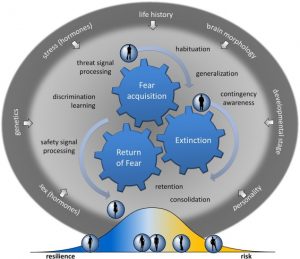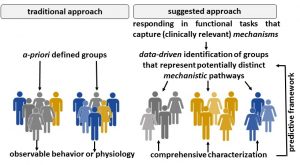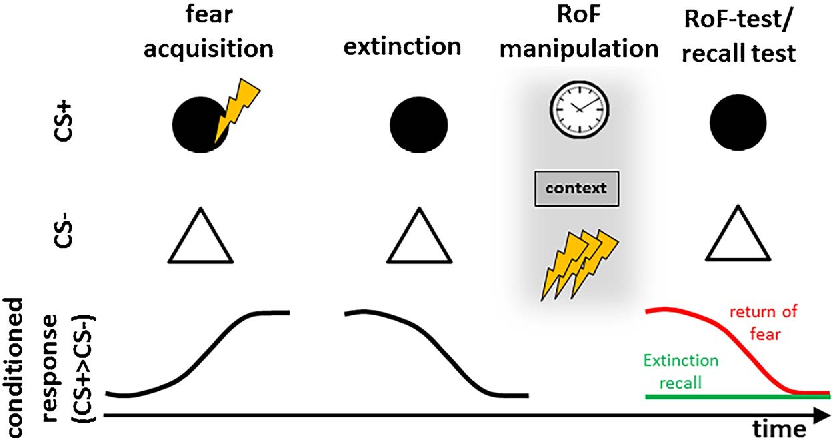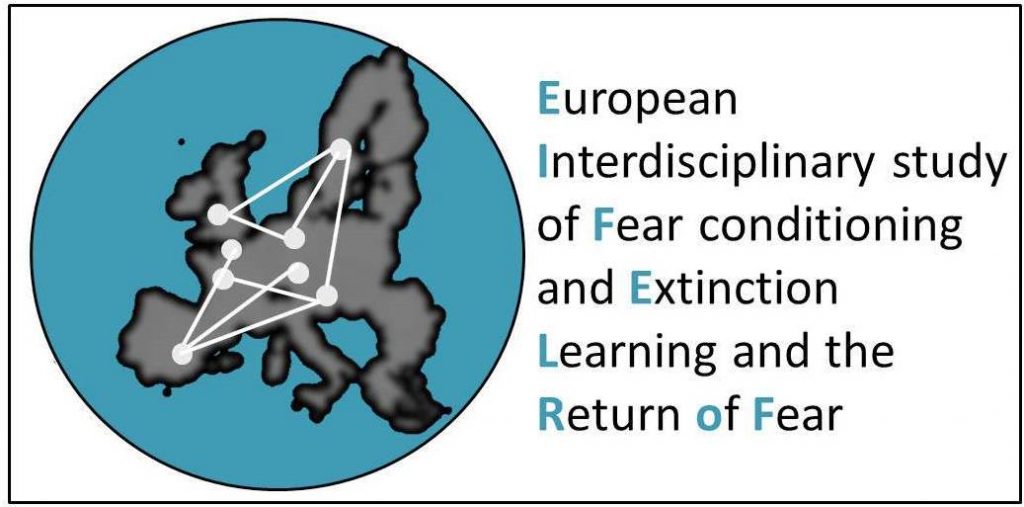Defensive responding under threat and stress
- dynamic adaptation to adverse events across the lifespan and response heterogeneity profiles


Previous
Next
Anxiety disorders are highly prevalent, cause individual suffering and high societal costs. Insight in basic mechanisms of anxiety is increasing, but less is known about why some people develop (pathological) anxiety while others do not. Understanding these individual differences is crucial for enlightening the etiology of anxiety, fostering resilience, and improving diagnostics and tailored treatments. In fact, individual differences represent the key for a personalized medicine revolution. The group has been studying a number individual difference factors in fear and anxiety research, including genetic polymorphisms, life adversity, sex, temperament variables as well as neurotransmitter systems and hormonal factors and recently published a review on this topic. As part of the Collaborative Research Center on Fear, Anxiety and Anxiety Disorders, the group is contributing to large-N (currently N~3000) multicentric studies focusing on individual difference factors. In the context of a recenty acquired Emmy-Nöther grant by the German Research Foundation, we aim to take a different appraoch and utilize sample heterogeneity – which has commonly been regarded as error variance when interested in generic principles. We expect that sample heterogeneity will allow for the identification of and classification of individuals into meaningful homogeneous subpopulations characterized by distinct mechanistic pathways in fear and anxiety. This project will employ a wide range of state-of-the art methods such as combined facial EMG-fMRI to assess fear-potentiated startle, assessment of freezing like behavior in humans (i.e., whole-body sway) as well as virtual reality scenarios and smartphone-based applications in combination with computational approaches to data analyses – specifically tailored to individual difference questions.
Experimental model for anxiety and stress-related disorders

Clinically, the high re-ocurrence rate in anxiety patients after successful treatment is a significant problem. In the laboratory, this re-ocurrence of the fear (“return of fear”, ROF) can be triggered through certain experimental manipulations. In the human field, we have begun to systematically investigate experimental and individual boundary conditions underlying the ROF. In collaboration with the Institute of Psychiatry and the Institute of Legal Medicine at the University Medical Center Hamburg Eppendorf the first translation of pre-clinial research to patients with panic disorder, post-traumatic stress disorder and acute trauma has been initiated. As part of the Collaborative Research Center on Fear, Anxiety and Anxiety Disorders, a large longitudinal study on the impact of life adversity on the return of fear in an experimental setting is currently ongoing.
Meta-Research: Measurement challenges in experimental neuroscience and biological psychology

The so-called ‘replicability crisis’ has sparked methodological discussions in many areas of science in general, and in psychology in particular. This has led to recent endeavours of the scientific community to promote the transparency, rigour, and ultimately, reproducibility of research.
Originating from this zeitgeist, the challenge to discuss critical issues on terminology, design, methods, and analysis considerations in fear conditioning research has recently been taken up by the ‘Research Network for the European Interdisciplinary Study of Fear and Extinction Learning as well as the Return of Fear (EIFEL-ROF)’.
The lab is strongly interested in and highly commited to meta research – an emerging discipline, with the goal to evaluate and improve research practices (research methods, reproducability, evaluation, and reporting).
The EIFEL-ROF network, for which Dr. Lonsdorf serves as the spokesperson since 2015, aims to increase communication and coordination through tutorial/research guidelines papers, joint publication of review articles and meta-analyses, coordination of cross-laboratory replication tests and data pooling (see here for an overview of our work). This will entail small steps from the individual research groups involved, while creating a giant leap forward for the field.
The discussion in the EIFEL-ROF network have generated many new (meta-) reserach ideas to answer questions on the methods we are using that we are hitherto unable provide a clear answer to. In the past years, we (in particular Rachel) have constantly pursued projects originating from these discussion. The projects include for instance the impact of inclusion of startle probes on fear learning or the inventarization of different operationalization of the “extinction retention index” in the literature and their empirical comparison in a number of datasets (in revision).
The EIFEL-ROF network is funded by a grant from the German Research Foundation to Tina Lonsdorf and Christian Merz (DFG, LO 1980/2-1) which is administrated by the University of Hamburg (University Medical Center Hamburg-Eppendorf).
